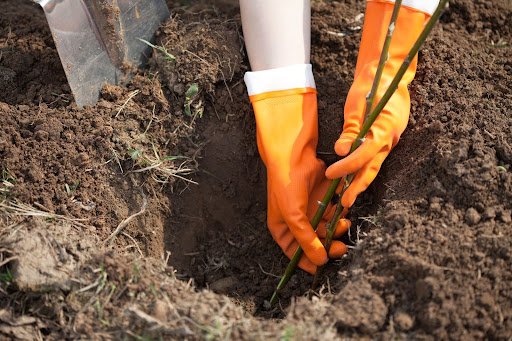Heaving or squeezing might sound like general sensations, but in professional fields—like geotechnical engineering or medicine—these terms point to very specific warning signs. Whether you’re dealing with a structural concern or a potential health issue, recognizing the early indications can be the key to preventing major problems.
This guide breaks down the signs that may indicate heaving or squeezing in soil/structural and medical contexts, helping you understand what’s normal—and what’s not.
What Does Heaving or Squeezing Mean in Soil and Structural Engineering?
In the context of soil mechanics or structural stability, heaving refers to the upward displacement of soil or foundation materials, while squeezing typically describes lateral or vertical movements due to external or internal pressure—often seen in soft or saturated soils.
Understanding these movements is critical for construction safety, foundation integrity, and infrastructure longevity.
A Bulge at the Bottom
One of the most definitive signs of heaving is a visible bulge at the bottom of an excavation or structure. This occurs when upward pressure from below—caused by swelling clay, frost heave, or hydrostatic pressure—pushes the ground surface upward. It’s especially common in cold climates or areas with high water tables.

If you’re working on a basement, tunnel, or excavation project and notice a convex deformation of the soil floor, it’s a red flag.
A Tension Crack
Tension cracks are another common indication of ground movement. When the soil expands or shifts unevenly, it may pull apart, creating visible cracks in the surface—especially near retaining walls or embankments. These cracks suggest that internal stress within the soil is exceeding its cohesive strength.
Even if small, these fissures should not be ignored—they often precede more serious structural instability.
Water Seeping Up from the Bottom
While not a direct sign of heaving, water seepage from below can signal soil saturation or inadequate drainage. These conditions often lead to upward pressure, softening of soil, or eventual displacement. If you see water surfacing in trenches or foundation sites, further geotechnical evaluation is warranted.

What Does Squeezing Mean in Medical Contexts?
In medical terminology, “squeezing” typically refers to chest discomfort associated with cardiovascular or gastrointestinal conditions. This kind of pain should never be dismissed—it could indicate life-threatening conditions like a heart attack.
Here are the primary causes:
Heart Attack
According to Mass General Brigham and other leading medical sources, one of the classic signs of a heart attack is squeezing chest pain. This can feel like intense pressure, tightness, or heaviness in the chest and may radiate to the left arm, shoulder, neck, jaw, or back.
This type of pain often comes on suddenly and may be accompanied by other symptoms such as:
- Shortness of breath
- Cold sweat
- Nausea or vomiting
- Lightheadedness

If you or someone else is experiencing these symptoms, call 911 immediately.
Angina
Angina is a symptom of coronary artery disease (CAD) and results from reduced blood flow to the heart muscle. It’s often described as a tightness or squeezing in the chest, and may occur after physical exertion, emotional stress, or heavy meals.
Angina is not a heart attack, but it’s a warning sign of underlying heart problems and should be taken seriously.
Also Read : What to Legally Do Before Touching Someone in an Emergency
Esophageal Spasm
Not all squeezing chest pain is heart-related. In some cases, esophageal spasms—sudden, intense muscle contractions in the esophagus—can mimic heart-related pain.
These spasms may cause:
- Intense, squeezing pain behind the breastbone
- Trouble swallowing
- A feeling of food being stuck in the chest
While not always dangerous, they can be frightening and should be evaluated by a physician, especially to rule out cardiac causes.
Why It’s Important to Recognize These Signs
Whether you’re on a construction site or experiencing unusual physical symptoms, early recognition of heaving or squeezing signs is crucial. Delaying intervention can lead to serious consequences—structurally or medically.
In structural settings, ignoring soil movement may result in:
- Foundation failure
- Collapse of retaining walls
- Unsafe working conditions
In medical situations, ignoring chest pain or discomfort can result in:
- Cardiac arrest
- Complications from untreated heart disease
- Emergency hospitalizations
Frequently Asked Questions (FAQs)
1. What causes heaving in soil?
Heaving is often caused by expansive clay soils, frost action, or increased hydrostatic pressure. These forces push the soil upward, potentially damaging foundations or other structures.
2. Is squeezing chest pain always heart-related?
No. While squeezing chest pain is a common symptom of heart attacks and angina, it can also be caused by esophageal spasms, acid reflux, or even anxiety. Always get evaluated to determine the cause.
3. What should I do if I notice a bulge in my basement floor?
A bulge may indicate heaving due to underground pressure. You should contact a structural engineer or foundation specialist immediately for inspection and recommendations.
4. When should I worry about chest pain?
You should seek emergency medical attention immediately if your chest pain is accompanied by symptoms like shortness of breath, nausea, pain radiating to your arm or jaw, or dizziness. These may signal a heart attack.
Final Word: Know the Signs and Act Quickly
So, heaving or squeezing would be indicated by which of the following signs? It depends on the context. In soil and structural mechanics, you’re looking for bulges, cracks, and water seepage. And in medical emergencies, it’s often chest pain, tightness, or pressure.
In either case, these signs shouldn’t be ignored. Early detection and action can prevent major problems—whether you’re saving a building or a life.



